Interview – Rodrigo Sombra
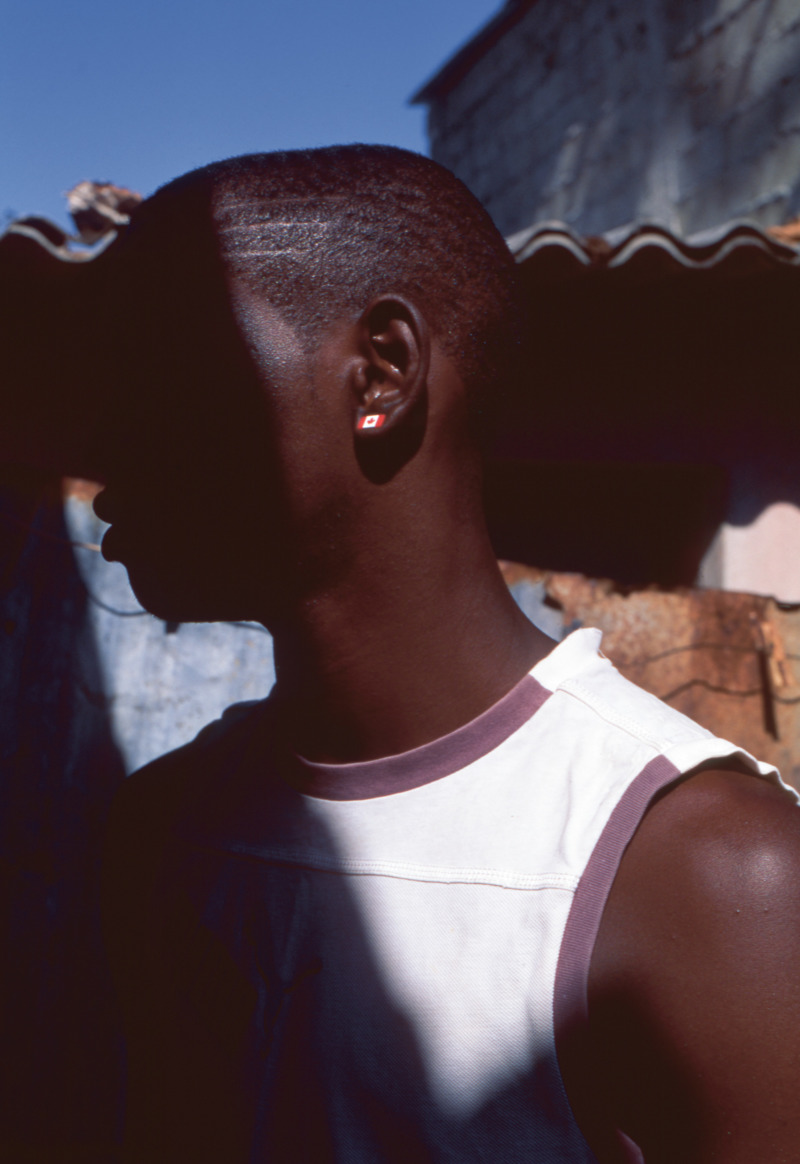
Rodrigo Sombra spent several months in Cuba shooting Insular Night: Invisible Gardens (Paper Journal, 2019) during many trips over a 5 year period. His time on the island was divided between four visits and he understood his place there as a foreigner, seeking to build a relationship to this place and people, always with the respect of someone who comes from a different culture and background – he knew he had to respect the ‘opacity’ of this place.
The images that populate Insular Night: Invisible Gardens are built of men, shadows, and strong colours; there’s no wish to reveal. These pictures embrace the shadows that hide the identity of those depicted to create a space for new meaning, an open contact between photographer, those who were photographed, and those who see these images. Rather than trying – in vain – to explain a place, Rodrigo’s images invite you to enter in this tangled garden leaving you transformed before you find your way out.
Insular Night: Invisible Gardens was selected for the Paper Journal Annual 2019, launching at Offprint, London on 18 May.
Your background is in journalism but, as I understand it, you are now fully dedicated to photography as your form of expression. How does your knowledge in this different, but not so distant field, help shape your views and practices as an artist?
I have worked as a full-time journalist only for a year and kept doing freelance gigs as a writer for a bit longer. From that experience, I have gained some extra boldness. One has to learn how to project oneself outward if one wants to be a journalist. Doing so has helped me to interact more freely with reality, making it easier for me to move around and approach people. It has also helped me get some editorial assignments as a photographer for magazines and newspapers, which is something I still do once in a while. However, more important than my period working as a journalist was the fact I completed grad school in Cinema Studies. Going to grad school opened up a whole new set of aesthetic, ethical, and conceptual questions that are key to my practice as an artist.
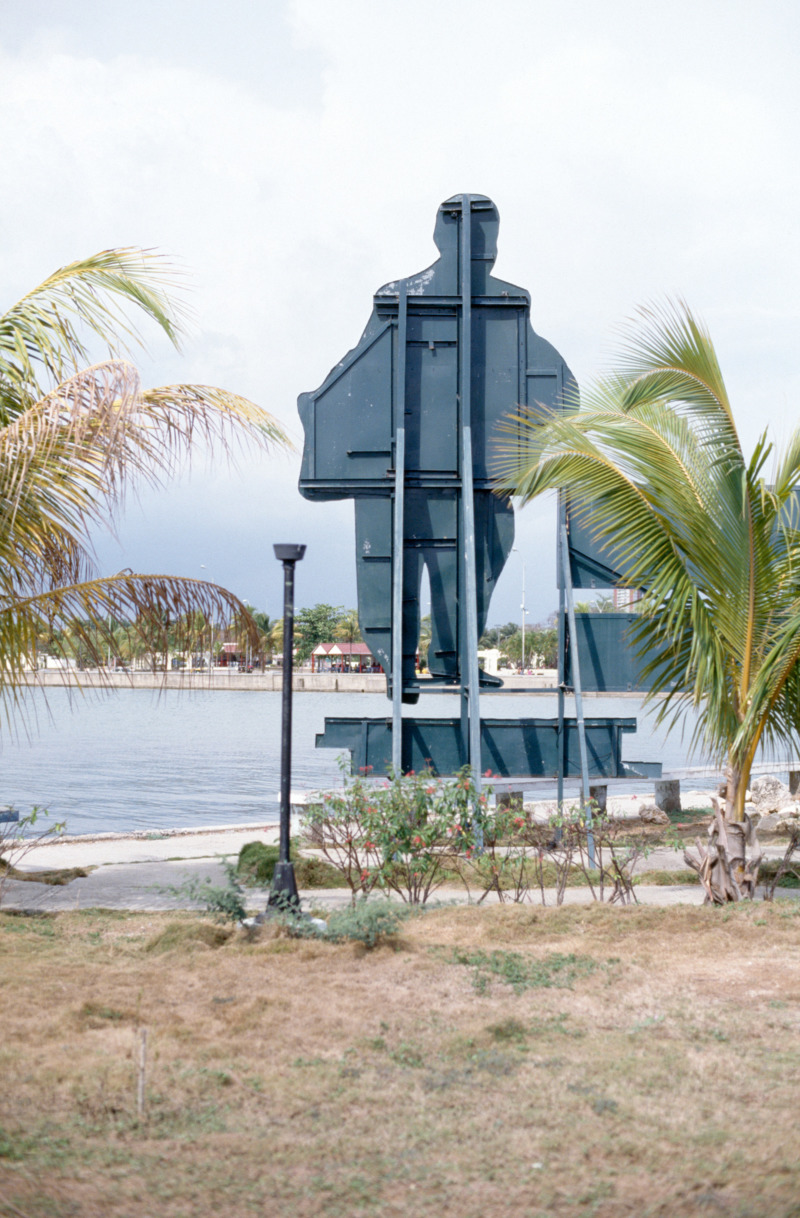
Insular Night: Invisible Gardens was all shot during a five month stay in Cuba. What brought you to the island? Was this work the result you sought out when embarking on your trip?
Going to Cuba has a lot to do with my literary passions. The title of the book was actually taken from a poem by Cuban writer José Lezama Lima. But from an early age, even before learning about Lezama, I had been a big fan of Cuban writer Pedro Juan Gutiérrez. What attracts me most in his work is how he uses orality in his prose to capture the rhythms of everyday life in Cuba. One reads Pedro Juan’s books as if the author was whispering something into the reader’s ear. I somehow hope my photographs have a similar effect.
I spent five months in Cuba in total, but not at once: I spread it out over four trips between 2014 and 2019. Cuba has changed quite a lot throughout these years; so have I and this project. At first, it wasn’t entirely clear to me what direction to take. I knew I wanted to create images exploring a tension between documentary and geometric shapes, something I had already been working on before going to Cuba. Finding a synthesis between a geometric aesthetic and the real (the feelings, the style, the melancholy and joy inscribed in the people’s bodies, landscapes, and objects), was thus my initial ambition. One can still find it in the book, yet as the narrative unfolds, the irruptions of the real get louder.
Being a foreigner in Cuba can be somewhat disquieting. It is a country whose economy relies heavily on international tourism. There is a flood of foreigners coming to the island every day, which represents an invaluable source of income to many Cubans struggling to make some extra money beyond their regular salaries which barely allow for subsistence. On the other hand, there was this urgent desire among many Cubans I met to be elsewhere else, of trespassing the limits of their own country and migrate – a desire to be a foreigner in someone else’s land which is something I have always cherished since I was very young.
So the allure of the journey, which any outside visitor in Cuba is the bearer, is always in stark contrast with the possibilities of many people there who ardently wish for it, but for multiple reasons, cannot have it. Moreover, despite the official propaganda’s insistence in celebrating a monolithic idea of ‘people’, Cuba has witnessed the emergence of a profusion of new imaginaries. There has been an ever-growing circulation of commodities and information coming from abroad in recent years, which is gradually shaping new worlds and subjectivities inside the island. Facing all these contradictions involving the foreign presence in Cuba challenged my initial ambitions leading the project to unforeseen pathways.
You were a foreigner photographing people and the marks they leave in the spaces they live in. Did you embrace or try to neutralize this view when making your pictures? Did the concept of ‘othering’ someone with your photographs concerned you in this process?
Everyone who has been to Cuba knows that you are being constantly reminded that you are a foreigner whilst there. My goal was never to neutralize it, but to intensify this foreign quality as much as possible in my work. There is an obvious distance separating me and the people I photographed in Cuba; I am fully aware of this. But this gap never played out as something that would paralyze me or stifle me in a self-conscious way. To be out in the streets photographing is something very free and intuitive to me. Of course, there is stuff that seems exploitative and that I would never photograph, but overall, I am very driven by spontaneity when I am photographing.
That said, exploring the multiple latitudes of the distance between me and the other is indeed a recurrent subject matter in my work. In the case of Insular Night: Invisible Gardens this relation is often expressed by an interplay of intimacy and strangeness. Another way to negotiate it was to refuse the clichéd imagery of Cuba we are all familiar with: vintage cars, cigars, guerrilla icons, ruins, etc… What I am offering with my pictures is not an illustration of a pre-conceived and easily recognizable idea of Cuba, but an interrogation about that country, about the person in front of the camera and ultimately about myself.
The work of Martinican philosopher Édouard Glissant has been decisive to me in this sense. While Glissant felt sympathy for syncretism and cultural intermingling, which are typical of the Caribbean, he would also claim for the ‘right to opacity’. One of the ways in which the notion of ‘opacity’ appears in Glissant is set at play to counter the Western societies’ historical craving for transparency.
This will to transparency translates the desire to know everything about the Other, it’s the will to fully explain, exhaust, and simplify the Other’s vastness and singularity. Glissant instead invites us to embrace the inscrutability of the Other, accepting that there are things we don’t or cannot understand, and living at peace with it. Moreover, for him, to respect the right to opacity doesn’t mean one cannot interact, work with, or love the Other – it’s quite the opposite. Getting acquainted with Glissant’s writings has offered me not only ethical learnings but an aesthetic inspiration of utmost importance in my work.
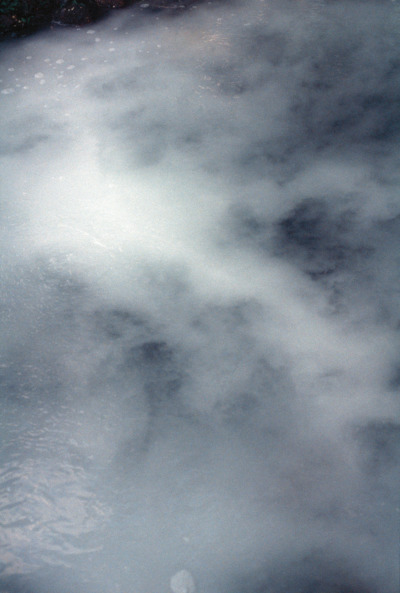
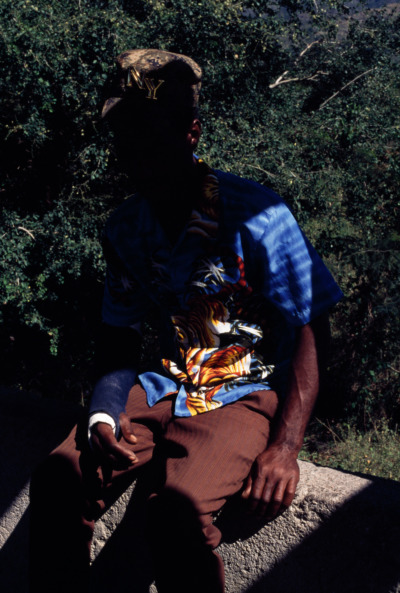
Most of your characters are faceless: either made anonymous by shadows, bandages or by your framing. Why did you take this approach?
I often feel challenged to explore aspects of the human figure other than the face or the gaze. Doing so allows me to approach the emotional voltage emanating from the person in front of the camera in a more oblique way. I’m very allured by the expressive qualities of the shadows. I feel that shadowing the faces introduces a reticence, a certain pause in our response to the human figure being portrayed. It also enhances the sort of interrogative tone I was aspiring to, hopefully prompting a freer and more imaginative reading from the part of the viewer.
One of the problems with the clichés I mentioned above is that what they offer is a restrained experience of time. What the clichés give you is immediate recognition and an instantaneous pleasure. You are in a safe place with the cliché. Instead, I’m drawn by images that resist to unveil themselves immediately. Not only with portraiture but with art in general, I’m seduced by works that induce me into a sort of thick experience of time. Robert Frank once said, “When people look at my pictures I want them to feel the way they do when they want to read a line of a poem twice”. I love this poetic description of photography; I aspire the same with my work. I wish for my photographs to foster a certain experience of duration, as if the picture had to linger on a bit longer in the viewer’s mind, puzzling her a bit before any meaning or dominant emotion could be ascribed to it.
Do you intervene in the spaces you are photographing or are you constantly seeking out this almost surreal situations that are present in your work?
Indeed, there is a oneiric quality in my work. This has a lot to do with my own approach when composing the images, although I don’t intervene in the spaces I’m photographing in the sense of creating a staged mise-en-scène. Not that I’m against that sort of approach or anything, it’s just that every time I tried something in that direction, the results ended up being kind of cold and uninteresting.
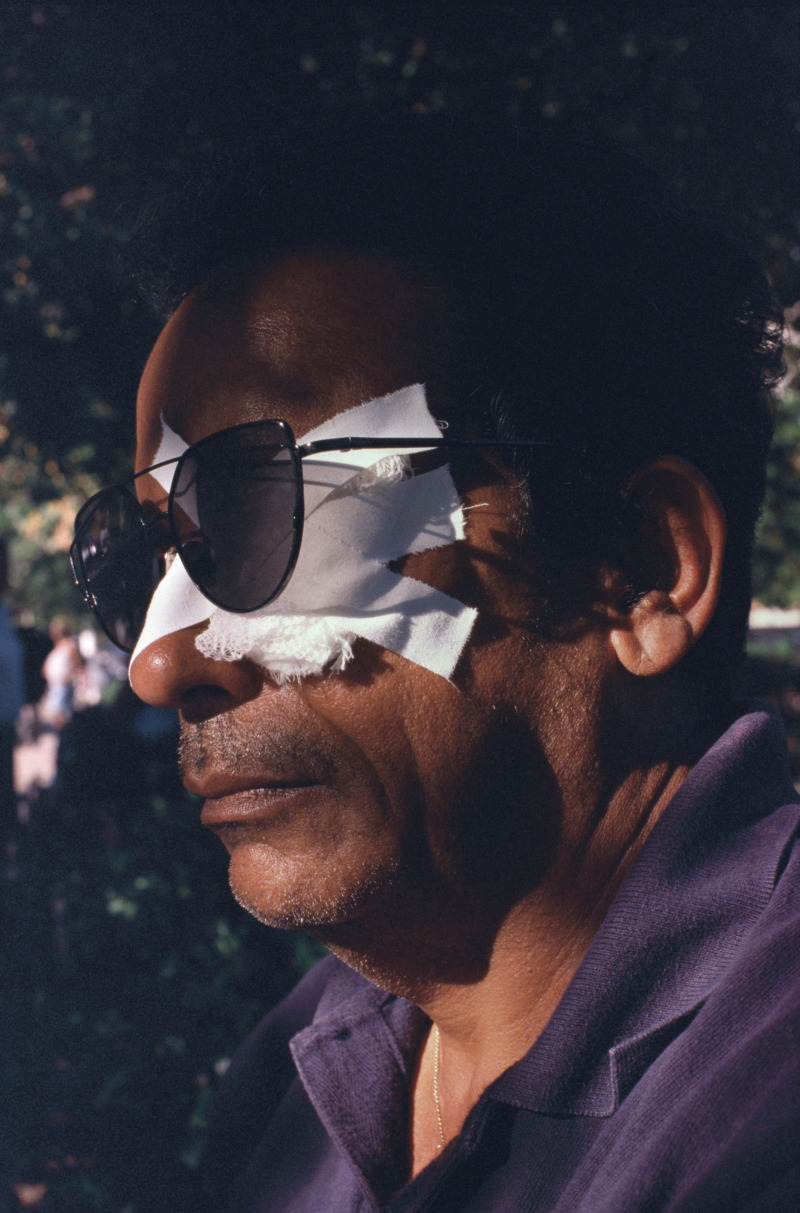
What were your narrative goals when sequencing the images for this book? How did you seek to built the atmosphere that surrounds your images?
The conceptual thread weaving the images together is the notion of ‘insularity’. Highlighting the condition of living surrounded by water was the way I found to explore other cultural, subjective and affective layers of the Cuban reality and my interactions with it. So this idea of insularity appears not strictly as a geographical concept, but as a sort of mental landscape in my book. Paper Journal’s editor Patricia Karallis, who edited the book with me, played a key role in developing this idea through the sequencing of images. We went through several drafts throughout almost a year and her gaze helped enliven my pictures through editing. The book’s narrative unfolds not solely by combinations based on the content of the photographs, for what each of them represents, but also through a series of visual rhymes and variations of colour and atmosphere in the sequencing.
Although portraiture stands out in the book, probing the empty spaces, the vestiges of human dilemmas one finds scattered throughout the landscape were also important to me. I wanted the narrative to convey something of the affective charge of the Cuban vernacular culture. While I was in Cuba I felt drawn by a popular iconography that exists at the margins of the official Marxist imagery, and which comes from multiple sources, from reinterpretations of signs of the commodity culture from abroad to elements of the Afro-Cuban traditions.
What is the role of color in your narrative? Do you see it as a way to visually organize your images?
Colour is a very important narrative tool for me. When I first started this project I was interested in the Cuban maritime imaginary, so I privileged a colour palette related to that universe, one which matched the kind of film I was using (the series was almost entirely shot with a now discontinued Fujichrome film, which had very unique blues and greens). As I moved along, I decided to open myself up to a broader palette, embracing warmer colours. Finally, the book ended up being very centred in primary colours. The pictures often show an interplay of reds, yellows and blues, which is a very common palette in Cuba, especially in some small towns I have visited.
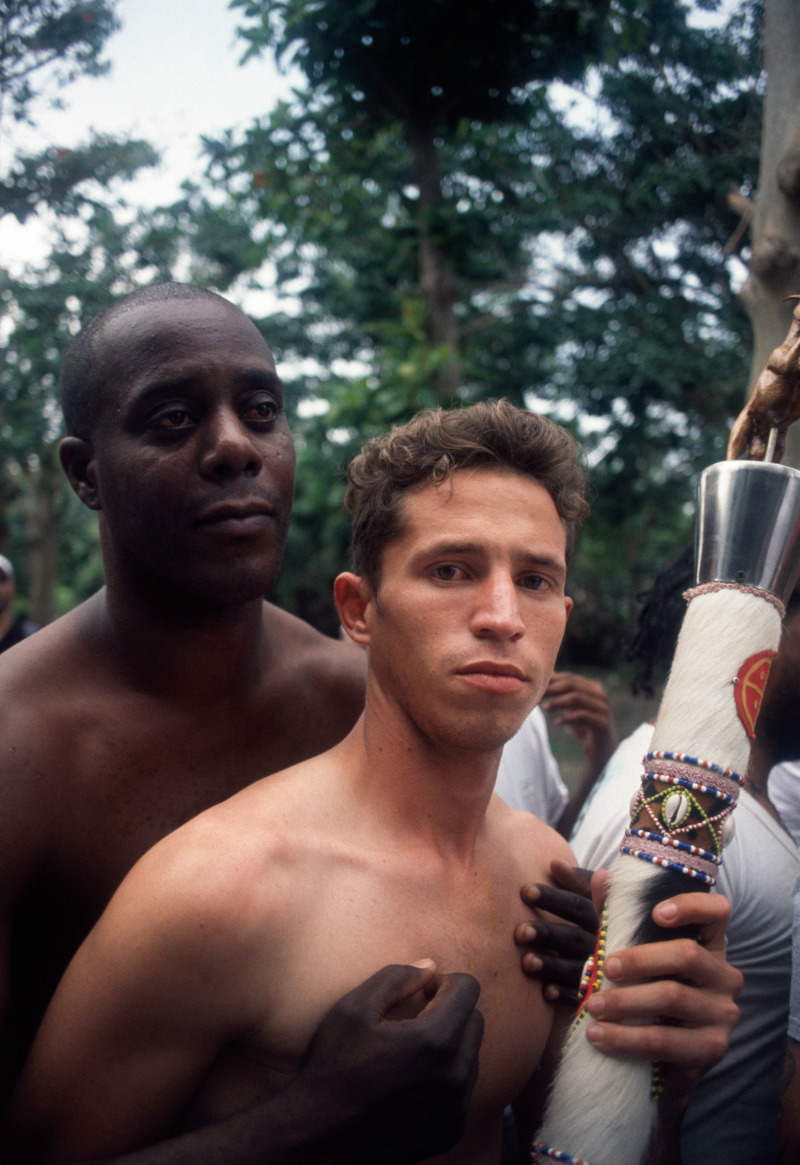
The male body plays an important role in this series. What kind of representation did you seek of these men? What caught your eye regarding them?
It wasn’t until very recently that I realized Insular Night: Invisible Gardens was very centred on male figures. It was a friend of mine who drew my attention to it. This is to some extent due to how gender is played out in Cuba regarding foreigners. Whereas I photographed several women while I was there, approaching them usually resulted in a much more constrained situation than when I was photographing men. Due to sexual tourism, having a foreign man approaching a woman to take a picture of her was often taken as something suspicious, creating a more uneasy situation.
But regarding the representation of the men I photographed, one of the things that interested me in Cuba was people’s relation to temporality. Once on the island, one is faced with another order of time. And I am not talking about the exoticism of vintage cars and decaying buildings, but of a certain rhythm, a certain cadence that is very peculiar to the flow of life there. Coming from the capitalist world, one feels as if life in Cuba was less dictated by the time of the clock. This is reflected in greater availability to the other, to neighbours and friends, to encounters and conversations of a dilated time, and this unhurried rhythm seemed to carve a set of gestures that exerted a strong attraction on me. Attuned to that, I tended to privilege photographs devoid of action. My photographs of people shy away from the imagery where Cubans look hectic and sexy, their bodies moving and dancing against a flashy backdrop. Differently, I felt moved by a sense of waiting and quietude I often encountered there. Moreover, what I am trying to describe here with respect to time, gesture and the body also involves a certain melancholy palpable in many of the encounters I had while I was in Cuba, which is naturally present in my pictures too.
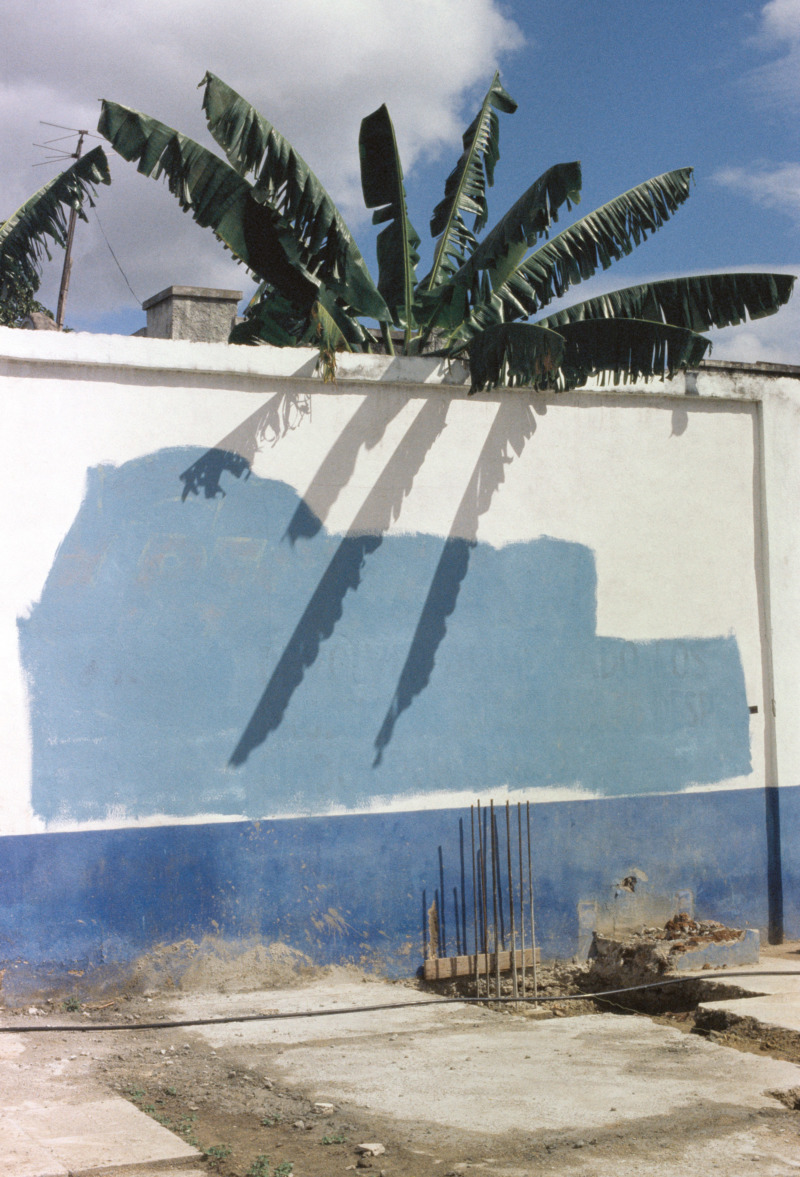
Are you seeking a reality that already exists or are you looking to build your own when creating your photographs?
It is never one thing or the other, but a constant movement between what reality presents to me and the world that my sensibility leads me to create. My work is born out of a profoundly personal framework, so I’d say the fictional drive overcomes the will to document.
On the other hand, to some extent one can’t escape from what already exists. Photography – at least the one I practice – can’t help but being a ‘parasitic’ language – it always deals with what is already there, with a pre-given reality; this is both the source of its limitations and its wonders. With respect to Cuba in particular, perhaps I should say that what I was portraying was less a reality that already exists, as it is the case with something that is already fully established, but instead a culture that is in the process of becoming. Insular Night: Invisible Gardens chronicles a country in rapid transformation. In recent years, Cuba has gone through drastic changes and yet it isn’t quite clear where the country is heading towards. There is a lot of expectation, uncertainty, impatience, among many Cubans, so it makes sense to keep a margin for indeterminacy in the narrative presented by the book.
Insular Night: Invisible Gardens, Rodrigo Sombra (Paper Journal, 2019) book launch and signing takes place at Offprint, Tate Modern, London, Saturday 18 May 2019 at 5pm.
Felipe Abreu is a Brazilian photographer, editor and curator currently living in Barcelona. Felipe publishes OLD, presenting up and coming photographers from around the world. He holds a MFA focused in the narrative process in photobooks and has published two books of his own: APROX. 50.300.000 (2017) and Folie à Deux (2019).
